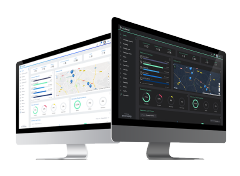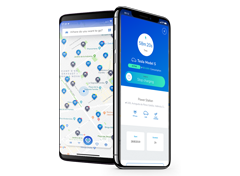
Interoperability: boosting electric mobility
Electric vehicle | Place to Plug | Our cornerInteroperability (eRoaming) is the implementation of communication standards such as the OCPI protocol for electric vehicle charging.
Interoperability, also known as itinerancy or eRoaming, is the standardisation of open communication protocols such as OCPI (Open Charge Point Interface) in the electric vehicle charging infrastructure that allows the exchange of data between the different actors involved in the charging process, that is:
eMSP: e-Mobility Service Provider whose customers are electric vehicle drivers
CPO: Charge Point Operator who manage charging points o charging stations
Such interoperability is required by the European Commission itself in the Alternative Fuels Infrastructure Directive. However, although "the Commission gave a mandate (M468) to the European standardisation authorities in 2010 to issue new or revise existing standards to ensure interoperability and connectivity between the electricity supply point and the electric vehicle charger", no consensus was reached on the choice of a standard interface or protocol, so an EU interoperable solution needs to be found in the form of a specific regulation.
The open source OCPI protocol provides scalability, security and simplicity in charging processes and is one of the most suitable protocols to be adopted as a standard for eRoaming in the European Union.
In short, interoperability allows the same charging point, station or network to be operated by multiple eMSPs, regardless of its "original" operator, and to be used by any user from any country or region.
Oops, oops, I'm sure you're thinking... how technical this all sounds! Nothing could be further from the truth:
What does lack of interoperability mean?
What is the current problem? Lack of interoperability. OK, but what does that mean exactly? Well, right now the vast majority of operators and charging point owners want to take a slice of the pie and make it mandatory to go through their platforms in order to use their charging station or charging point.
This means that many operators, in order to allow you to use their charging station, require you to sign a contract beforehand: to register on their platform (with the consequent acceptance of terms of use and privacy), to have added and/or communicated your payment details and even to have an RFID card in order to be able to charge.
As an electric vehicle driver, imagine how many apps (or even RFID ID cards) you would need to have on your smartphone or in your wallet to be able to charge your car. In short, not scalable at all and very time-consuming, isn't it?
And if we add to this the fact that another of the main current obstacles is the lack of information in relation to:
Location and availability of charging points in real time
Tariffs and total price of charging
And if we add the lack of transparency of some business models... Well, there you have it. All this boils down to one big problem: the lack of interoperability or eRoaming.
So what is the solution? Implementing interoperability
Interoperability is the solution to this problem. To give us a clearer idea, it would be a kind of "roaming" (like the telephone system) but transferred to the electric vehicle charging sector to boost electric mobility and the deployment of a powerful charging infrastructure.
Ideally, this system should not only be expanded at national level, but also at European and global level in order to make interoperability effective and real.
Thus, eRoaming is the adaptation and standardisation of a management system that encompasses the entire charging infrastructure (all charging points and stations, regardless of the operator and located in any country), to allow the end user, meaning the EV driver, to both charge (and even reserve) and pay for charging at any charging station, regardless of the operator or owner of the charging station.
In other words, it is about creating (and unifying) a single communication infrastructure in communication standards where all players in the electric vehicle industry and, consequently, in the energy sector are connected.
All in all, the aim of interoperability is to simplify the charging process as well as to ensure access to electric car charging for all users with the main goals of:
Providing an optimal user experience regardless of operators, charging systems or national frontiers
Providing relevant real-time information regarding the location, availability, prices and tariffs of charging stations
What does eRoaming provide?
In practical terms it would mean that, with a single app or card, you would be able to use and know the real-time status of any charging point associated with interoperability, no matter which CPO or eMSP you are using, be it Place to Plug, New Motion, PlugSurfing, Electromaps, ChargeMap...
Thus, the end result of eRoaming for EV drivers is completely invisible during the charging process, but it allows them to forget about who owns the charging point and charge their vehicle without any added difficulty.
And all this will make more and more sense, taking into account that the future of mobility, especially urban and interurban, is going to be one in which the car fleet is 100% electrified, including vehicle fleets (such as taxis), buses, private cars, motorbikes, scooters, vans, lorries...
How can we be so sure? Because the European Commission estimates that there will be 40 million electric vehicles in circulation by 2030 (compared to 420,000 today). So, to meet the transport decarbonisation targets (set out in the European Climate Law), Europe will need to multiply the current 213,000 electric vehicle public charging points by 13 to achieve the proposed (and necessary) figure of three million charging stations installed by 2030.
After all, eRoaming will allow EV drivers to finally eliminate the well-known range anxiety. The availability of a greater number of charging stations from different operators and countries will provide users a greater range of kilometres to be driven.
And ultimately, once interoperability is implemented, concepts such as Smart Charging and Smart Grids or Vehicle to Grid will make even more sense to further optimise the use of the electricity grid.
Which is the future of eRoaming?
According to the study 'Advancing eRoaming in Europe: Towards a Single "Language" for the European Charging Infrastructure', the European electric vehicle market is growing significantly, "but the absence of adopted interoperability protocols and standards for charging hinders the development of cross-border electric vehicle travel: e-roaming".
The study states that "electric mobility can be seen as a complex system, with multiple and interrelated actors involved, including charging point operators, electric mobility service providers and roaming centres". This is indeed the case, considering that a charging process involves:
- The vehicle
- The station hardware and software
- The payment and billing of the charge
- The station operator
- The charging power
- The electric grid and the Energy Management System (EMS)
Thus, according to their statement, "building an efficient and user-friendly charging infrastructure requires all of them to communicate. Anticipated future developments will require communication between even more parties. Protocols are essential to ensure effective communication between all parties involved".
OCPI protocol
This is the origin of the EVRoaming Foundation, founded on 28 May 2020 and commissioned to manage and maintain the OCPI protocol (which began to be developed in 2014) to ensure its roaming, as well as its free availability and accessibility for any electric vehicle driver.
OCPI is an open and independent protocol that acts as the language in which operators and charging service providers connect and communicate, facilitating interoperability. This protocol has already become an open source (and free to use) standard, as it is being deployed and implemented by multiple companies and players.
OCPI provides scalability and simplicity in the charging process by allowing easy connection and data exchange through a single API (application programming interface).
"Simplify, standardise and harmonise" is the OCPI's slogan, the latest version of which is 2.2. and whose features include:
Ensures scalable and automated roaming between CPOs and eMSPs
Shares real-time information about charging stations in terms of status, prices and tariffs
Allows pre-booking of a charging point or charging station
Supports Smart Charging
Enables reconciliation of transactions and billing between CPOs and eMSPs
Enables charging of electric vehicles that want to connect to any OCPI-partner charging point
But be careful! OCPI is a communication protocol for electric vehicle charging, but it is not the only one. There are also proprietary protocols, such as the one used by Tesla's Superchargers, which are not equivalent to open standards.
Current solutions: Gireve and Hubject
There are currently two major interoperable platforms. Gireve, founded in 2013 and present in more than 28 countries, has a network of 106,000 charging points open to roaming and a total of 242 partners. It also has strong shareholders such as Renault, DEMETER, EDF and ENEDIS, among others.
From June 2020, Place to Plug has teamed up with Gireve to offer our customers and users charging opportunities at more than 90,000 Gireve-connected charging points in Europe. In addition, owners and operators will be able to manage their charging stations through Connect, our EV management system that provides interoperability and multiple advanced features.
Hubject, founded in 2012, is also an eRoaming platform. It has a network of more than 250,000 charging points worldwide and its main shareholders include brands such as the Volkswagen Group, BMW and Porsche.
As they say, interoperability "is the gateway to the world of electric mobility for car manufacturers and power suppliers, telecommunications companies and transport providers", and we couldn't agree more!
Both companies do not directly operate any charging stations, but are aggregators offering a B2B (business-to-business) platform to unify all those actors that are part of the charging process: bringing together CPOs and eMSPs.
Thus, the connection to both platforms allows both charging point operators and owners (CPOs) and electric mobility service providers (eMSPs) to offer their stations to new users.
💙🔌 How does Place to Plug contribute to implementing interoperability?
At Place to Plug we are developing Nexus, our own interoperability platform using today's leading protocols, which is complemented by the multiple services we offer for all players in the EV charging industry, thus providing an all-in-one solution:



Leave a comment
Comments ( 1 )
Nice Post, I Loved your article. AMO Electric Bikes is leading e-mobility company in India having its presence in more than 18 states in India. Electric scooter Jaunty Plus is the best selling e-scooter model by AMO Mobility Solutions. Click on the given link to know more about AMO Electric Bikes: For details click at:- https://amomobility.com/